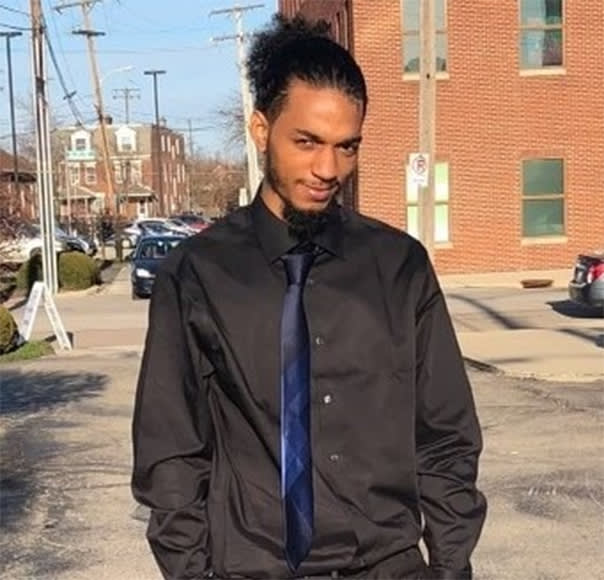COLUMBUS, Ohio — Prosecutors say the gun that a former Ohio sheriff's deputy said a man was waving at him when he fatally shot him in the back in 2020 had its safety activated. It was announced that the man was found in the kitchen of his home.
During opening statements in the murder case against Jason Meade on Wednesday, special prosecutor Gary Schroyer spoke publicly for the first time about where 23-year-old Casey Goodson Jr.'s handgun was found. Goodson fell to the ground after being shot six times, five of them hitting him in the back, and he was wearing an unstrapped gun holster around his waist, Schroyer said.
Meade, who is white, has pleaded not guilty to murder and reckless homicide in the death of Goodson, who is black. A sheriff's deputy shot and killed Goodson as he entered his grandmother's home, police said.
The jury to hear the case was seated Tuesday and testimony was scheduled to begin Thursday. Jurors briefly visited the scene of the shooting Wednesday afternoon.
Schroyer reiterated Wednesday that Goodson was holding a sandwich bag in one hand and keys in the other at the time he was shot. He also had airpods in his ears, Schroyer said. Neither he nor Goodson's family dispute that Goodson may have had a gun, but note that he also had a firearms license.
Schroyer said Meade's actions met the criteria for intentionally and knowingly causing Goodson's death because he fired an assault-style rifle at “vital organs.” Stated.
“At the moment he pulled the trigger, Casey posed no reasonable threat to himself or anyone else,” Schroyer said.
Meade's attorneys argued Wednesday that Goodson waved and pointed a firearm at Meade as Meade drove by, and that Meade followed Goodson to his grandmother's house. Meade previously said that before Goodson entered the home, he turned around, raised a gun and pointed it at his deputy, prompting Meade to fire.
Defense attorney Caitlin Stevens said Goodson did not heed warnings to stop and drop his weapon because Mead feared for his safety and the safety of others, including those inside Goodson's grandmother's home. , said the use of deadly force was justified.
“You have to look at the totality of the situation,” Stevens told jurors in his opening statement, asking how a reasonable police officer could make decisions about situations where deadly force is necessary. He said he was instructed to consider the matter.
“Officers on the scene don't have the luxury of hindsight,” Stevens said.
Meade was not wearing a body camera at the time, so there is no video evidence of the shooting.
Goodson's family has filed a federal civil rights lawsuit seeking unspecified damages. The Franklin County Sheriff's Office is alleged to have failed to investigate allegations of unreasonable use of force against black residents and failed to properly train deputies who fire guns at civilians, particularly African Americans. .
A federal judge has suspended proceedings against Meade and Franklin counties until the criminal cases are completed. The officer had argued that defending himself in both cases at the same time would put him in a no-win situation.
Mr. Meade's lawyers have proposed taking his case to federal court as a step toward dismissing the state charges and because it is far less likely that Mr. Meade would be charged with Mr. Goodson's murder under federal law. requested that the case be heard.
The Franklin County Prosecutor's Office fought the move to keep the charges alive in state court. A federal judge ruled in February 2022 that Meade was not acting as a deputy U.S. marshal at the time of the shooting and said the murder case should remain in state court.
Federal Judge Edmund Sargas Jr. found that Meade, as a member of the task force, did not have the authority to arrest Goodson and was not acting as a federal employee at the time. Meade is a full-time deputy with the Franklin County Sheriff's Department and was regularly assigned to the U.S. Marshals Fugitive Task Force shortly before the shooting.


